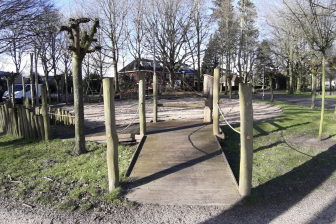
Using urban planning tools to create child-friendly communities
In Western Canada, the Society of Children and Youth of British Columbia (SCY) has designed a website that offers measurement and planning tools to make cities more liveable for children and youth, using 18 community domains, including local government, parks and nature, business and the built environment. This tool can be used to elicit input from the full range of stakeholders, including children, youth, and families.
The Child Friendly Communities website grew out of SCY’s earlier work on child friendly housing. In the 1990’s, the Child Friendly Housing Project addressed the needs of children in multi-family housing by applying a child and youth friendly perspective. This groundbreaking work by SCY provided a practical guide for professionals working on housing issues, while incorporating the voices of children and young people.
Child-friendly perspective
This work was presented at the UN Habitat II Conference in 1996 and provided insights into the value of using a child and youth friendly lens. At the conference, it was declared that cities need to be made liveable places for all and that “the well-being of children is the ultimate indicator of a healthy habitat, a democratic society and of good governance.” This was the start of SCY creating resources that provide a child and youth friendly perspective.
The Society of Children and Youth of British Columbia launched the Child and Youth Friendly Communities Toolkit in 2013. The toolkit links to 18 domains, providing checklists to evaluate each domain and additional links to resources and best practices. Each domain is informed by the United Nations Convention on the Rights of the Child (child-friendly version), as well as evidence based best practice on what makes a healthy community for children and youth.
Child and Youth Friendly Communities Toolkit
Using the Toolkit
The website contains a wealth of information and, in order to use the toolkit effectively, SCY suggests some initial reflection:
- How will you define the scope of your ‘community’? The child friendliness features are adaptable to various definitions of community – from an organisation to a municipality.
- What is your sphere of influence? Do you have relationships and partnerships that will make one domain a logical starting point?
- What is the current political/policy environment? Are there domains that are currently hot topics where it will be easier to build on existing commitments to secure buy-in?
- Is there an established need? Do you know which domain would currently make the biggest difference to the lives of children and young people in your community?
- The website is designed to be an ideas bank, to share ways to build communities that better meet the needs of children and youth. At the bottom of every page is an opportunity to contribute. SCY wants to hear from you! Share your success stories, share your research, and share your ideas!
Author: Helen Davidson
References:




